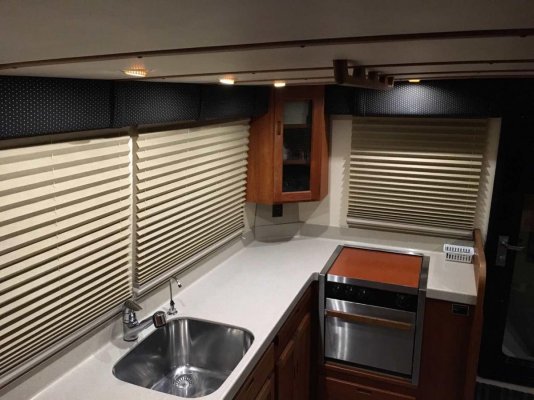ak-guy
Senior Member
I have reduced considerably the noise from my engine in various ways. My pilothouse ceiling is bare fiberglass (plywood core) and I would like to cover it with some kind of sound absorption material. There are no beams or stringers. What materials have you used and how effective was it? There is regular foam backed vinyl but it seems too thin to be effective. It would be good to have a surface that is somewhat resistant to damage and washable.


